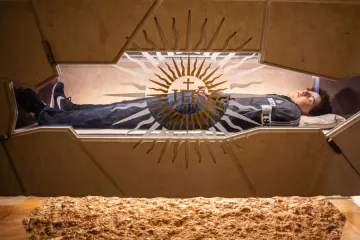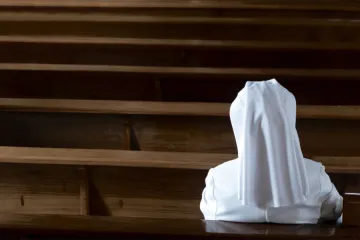Denver, Colo., Aug 11, 2023 / 10:13 am
On Aug. 11, the Catholic Church celebrates the feast of St. Clare of Assisi, a woman born into a noble family who was moved by St. Francis’ preaching and decided to embrace a life of poverty, founding a cloistered contemplative order of religious sisters called the Poor Clares.
The order spread rapidly throughout Italy with young noblewomen selling all their possessions to take on the habit of a Poor Clare. In 1218, the order began to spread outside the Italian border. Agnes of Assisi, Clare’s sister who also became a Poor Clare soon after her sister, introduced their way of life to Spain. Soon monasteries in Belgium, France, and other European countries began to open.
Branches within the order include the Colettine Poor Clares, Capuchin Poor Clares, and the Poor Clares of Perpetual Adoration.
The Poor Clares follow the Rule of St. Clare — which was approved by Pope Innocent IV two days before Clare’s death in 1253 — and take vows of poverty, obedience, and chastity.
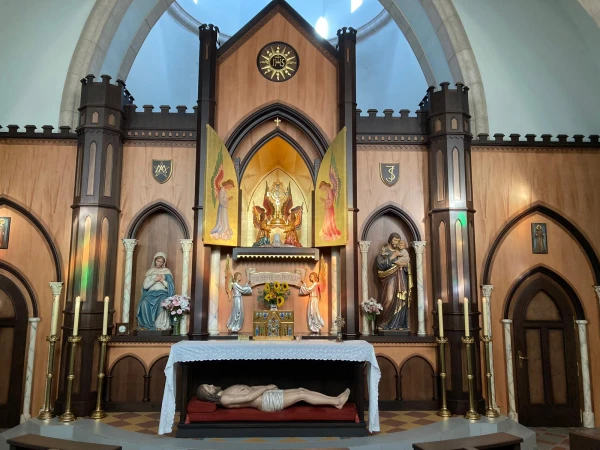
Mother Marie André Campbell is a Poor Clare of Perpetual Adoration at the Our Lady of Solitude Monastery in Tonopah, Arizona. She has been a religious sister for the past 29 years and the abbess of the monastery since 2016.
The third of four daughters, Campbell grew up in a military home as her father was in the Navy. After graduating from the University of California-Santa Barbara, she wanted to enter a government service such as the CIA, DEA, or FBI.
“I actually interviewed with all those,” she told CNA in an interview. “And every time I did, something strange would come up and it would never go through.”
While working in San Diego and feeling “a little frustrated because I didn’t know what the Lord wanted of me,” Campbell went on a trip to Irondale, Alabama, to visit her best friend, who had just entered Our Lady of the Angels Monastery, the monastery Mother Angelica founded in the 1960s. (She later launched EWTN from the monastery in 1981.)
“I had met Mother Angelica and she had said to me, ‘We'll take care of you.’ And I thought, well, it probably was that I would be working at the network,” Campbell explained. “So, I left and when I got home just a couple weeks later, I really felt like the Lord called me to that life like a bolt out of the blue. That was March of 1994. I entered in September of 1994.”
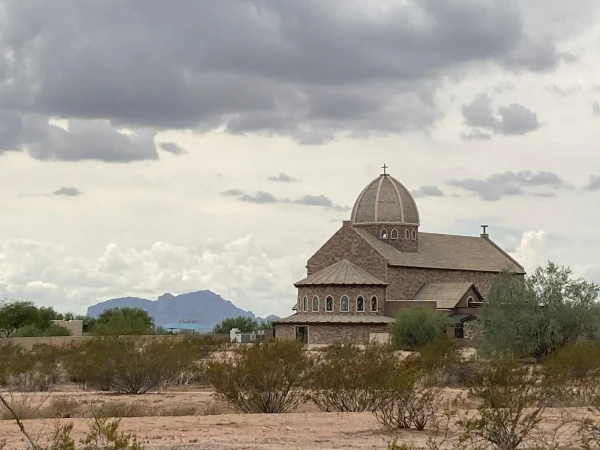
Campbell explained that she considered becoming a Dominican sister; however, the contemplative life appealed to her. Additionally, growing up in California, she was surrounded by the missions, which were founded by Franciscan priests, cities there were named after Franciscan saints, and, surprisingly, each of her sisters was born on a Franciscan feast day.
“I felt like the Lord had maybe planted the seed long before, and then it bloomed as I got older,” she said.
The Poor Clares of Perpetual Adoration originated in France and was founded on Dec. 8, 1854, the solemnity of the Immaculate Conception, by Pope Pius IX. Mother Marie Claire Bouillevaux, the order’s foundress, wanted to start an order that combined the Franciscan form of living with a special devotion to eucharistic adoration in the spirit of thanksgiving.
“That is our whole life — of thanksgiving, reparative thanksgiving, where our life really cycles around our Lord’s presence,” Campbell explained.
In 1921, the first monastery of the order was established in the Diocese of Cleveland, and in 1925 the Cleveland monastery became one of the first cloistered communities in the United States to receive the privilege of solemn vows.
(Story continues below)
Campbell expressed that next to the Mass, adoration is “the most important aspect of our faith because we have before us Our Lord present in the holy Eucharist, body, blood, soul, and divinity.”
The monastery sits just six miles away from a major highway in Arizona. Campbell shared that many times she finds herself wondering if the people driving by “know who’s in the midst of them as they’re driving back and forth.”
The religious sister encouraged anyone seeking the Lord to “just set a little bit of time aside for him.”
“It’s difficult times we live in. Just pop your head in to see him and I guarantee that he'll assist you. His loving presence will fill you with peace and grace. All we have to say is, ‘Speak, Lord, your servant is listening,’ and in any difficulty, any trial, any blessing, too — you won’t regret it.”
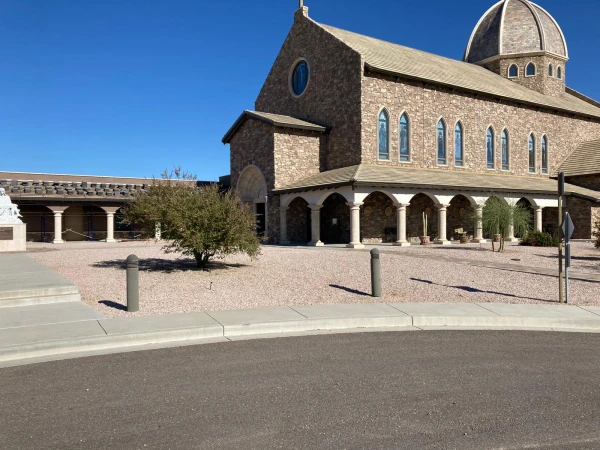
The sisters start their day early in the morning and follow a regulated schedule of prayer, daily Mass, meal times, work time, Holy Hours, and recreation.
“I have always believed, from when I entered years ago, that it was the perfect balance of the day, and that’s because I’m called to live it,” Campbell shared.
When asked what she would tell someone discerning religious life, she said: “Step out in courage and faith.”
“We have to kind of slow down, walk beside him or even behind him saying, ‘Lord, you know whatever you want. I say yes,’” she explained. “All, really, that matters is that you say yes to the Lord and you are able to receive the grace to say, ‘Whatever you want. May your holy will be done.’”
It is for this same reason that Campbell sees St. Clare as such an important saint.
“She really put all of her trust in the Lord — total trust in his divine providence,” she said. “That’s what Mother Angelica did and that’s what we’re all required to do. The way is not always clear. It wasn’t clear for holy Mother Clare, but we just have to be patient and trust. And that’s what she was because she really believed with Jesus that we don’t have anything to fear.”
Today there are 27 monasteries of Poor Clares of Perpetual Adoration around the world in countries including France, Bangladesh, India, Germany, Poland, and more.




